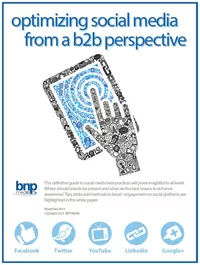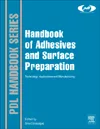Q & A Exchange
We have recently encountered a problem in converting label stock we purchase for specialty EDP labels that we print, slit, die-cut into sheets and box for our customers. One of our label-stock suppliers convinced us to change the adhesive on this label stock from an acrylic to a hot melt, which is saving us money. However, we are finding it more difficult to slit and die-cut this material, and it is causing a lot of downtime. There seems to be a lot of adhesive buildup on our cutting and slitting tools. What might be causing this problem?
This could be a very simple or a very complex problem, and there are a few obvious things to consider. Many acrylic pressure sensitive adhesives (PSAs) are at least partially crosslinked and have good thermal resistance. Most hot melt pressure sensitive adhesives are reversibly thermoplastic and will soften under heat. Certainly, your converting processes generate heat. This might be causing the hot melt PSA to soften and gum up your tooling. You might try chilling your cutting tools to see if this will alleviate the problem. If not, you might be able to get a similarly low-cost label stock from your supplier with a hot melt adhesive that has a higher temperature resistance, or shear adhesion failure temperature (SAFT).
-BOB SMITH
We manufacture some specialty resins that we think could be used by adhesives formulators, but we don’t know how to approach this market, nor what will be required of us by prospective customers. We currently have a very small sales and technical staff that is focused on serving our existing customer base. What should we be aware of before attempting to enter this market?
The adhesives industry is indeed a specialty industry that demands much from its suppliers. The industry is still highly fragmented with hundreds of formulators, however only a handful represents a large portion of the total market. Adhesives formulators are demanding of suppliers with respect to technical and other services, including deliveries. To best serve formulators, a supplier should be positioned as almost a “partner” with respect to product development, although developing this level of trust can be difficult and takes time. Adhesives formulators purchase raw materials directly from suppliers and through distributors, so there are several business-model options to consider.
Depending upon your particular technology, you may find ready acceptance or you might encounter indifference. It is very hard to enter this market as a new supplier of “me-too” technology, as few formulators are willing to switch existing raw materials in formulations due to the high changeover costs, even if your offering is at a lower price. Formulators are looking for new technologies that offer them the opportunity to formulate new, value-added products for their served markets.
-BOB SMITH
We are using a two-part epoxy adhesive that cures at room temperature. However, at times we speed up production and use a little heat to accelerate the cure of the adhesive. We then have noticed a slight corrosion of a copper film that is not touching the adhesive but is near it. Could there be any correlation between the corrosion and the epoxy adhesive?
Yes, possibly. The heat will accelerate any oxidation of the copper. In addition, epoxy adhesives are often cured with various amine curing agents. With the presence of heat, there may be some volatilizing of the amine curing agent. This then may be condensing on the copper film. Certain amine curing agents can be extremely corrosive to copper. If this is the case, your adhesive formulator can easily change curing agents, as well as change the curing rate to eliminate the need for heat.
-ROGER J. Lohman
Looking for a reprint of this article?
From high-res PDFs to custom plaques, order your copy today!




